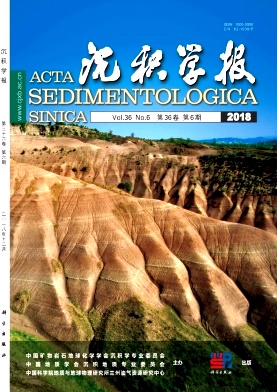Porosity Identification, Mechanism and Significance for Littoral Sediments without Obvious Compaction
doi: 10.14027/j.issn.1000-0550.2018.097
- Received Date: 2017-03-31
- Rev Recd Date: 2018-07-04
- Publish Date: 2018-12-10
-
Key words:
- littoral sediment /
- initial sedimentary porosity /
- initial sediment compaction /
- compaction degree /
- under-compaction /
- compaction subsidence
Abstract: The correlation between compaction degree and porosity derived from the theoretical model of sedimentary compaction and the variation of soil volume, pore ratio and porosity of soil units before and after compression shows that the variation of the porosity of overlying sediments depends on the initial sedimentary porosity when compaction degree of underlying sediments does not change during sedimentation. The change of sedimentary environment results in the change of initial sedimentary porosity, which is not related to buried depth, and the underlying sediment porosity is greater than that of the overlying deposits. This is the performance of the underlying-sediment pore water which cannot be discharged and the sediments are under-compacted. When the porosity of the lower part of the soil column is greater than that of the upper part of the soil column, the lower part of the soil column must be under-compacted without any external disturbance besides sedimentation, which is an important sign to identify the under-compacted littoral facies sediments after the overlying sediments is formed. Comparing the porosity and distribution depth of the same named soil in 58 boreholes and 191 soil samples from 8 engineering sites along the coast of Guangdong Province and 208 soil samples from different sites in Guangdong and other related areas in China, the analysis shows that the littoral deposits within about 40 m or sediments since the middle and late Pleistocene are under-compacted vertically and laterally. This kind of under-compaction is ubiquitous in horizontal distribution. Therefore, we proposed that sedimentary compaction generally has three stages in sequence:1) the initial sedimentary compaction stage of the thin layer in the most surface layer under the influence of initial sedimentary porosity; 2) under-compaction stage; 3) re-compaction stage. The results show that the littoral deposits generally have poor permeability and drainage environment. Apart from the local sediments which are re-compacted due to deposition process, the compaction subsidence of littoral deposits within 40 m near the surface or since the middle and Late Pleistocene is not obvious. Therefore, when you conduct the study on Paleo-Sea level and coastal crustal movement in littoral deposits, it is not necessary to take into account the impact of sediment compaction.
| Citation: | XU QiHao. Porosity Identification, Mechanism and Significance for Littoral Sediments without Obvious Compaction[J]. Acta Sedimentologica Sinica, 2018, 36(6): 1091-1104. doi: 10.14027/j.issn.1000-0550.2018.097 |






 DownLoad:
DownLoad: